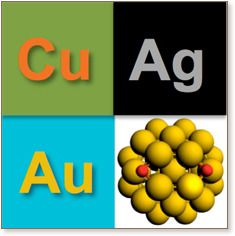
We compared the mechanism of O2 dissociation catalyzed by Cu38, Ag38, and Au38 nanoparticles. Overall, our results indicate that O2 dissociation is extremely easy on Cu38, with an almost negligible barrier for the O–O breaking step. It presents an energy barrier close to 20 kcal/mol on Ag38, which decreases to slightly more than 10 kcal/mol on Au38. This behavior is analyzed to quantify the impact of relativity and of dispersion interactions through a comparison of nonrelativistic, scalar-relativistic, and dispersion-corrected DFT methods. Nonrelativistic calculations show a clear trend down the triad, with larger in size nanoparticle (NP), weaker O2 adsorption energy, and higher O2 dissociation barrier, which is so high for Au38 to be in sharp contrast with the mild conditions used experimentally. Inclusion of relativity has no impact on the O2 adsorption energy, but it reduces the energy barrier for O2 dissociation on Au38 from 30.1 to 11.4 kcal/mol, making it even lower than that on Ag38 and consistent with the mild conditions used experimentally. Dispersion interactions have a remarkable role in improving the adsorption ability of O2 on the heavier Ag38 and especially Au38 NPs, contributing roughly 50% of the total adsorption energy, while they have much less impact on O2 adsorption on Cu38.